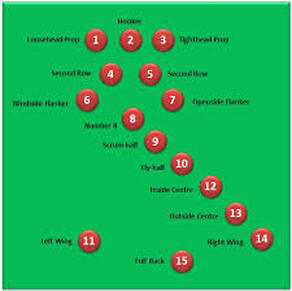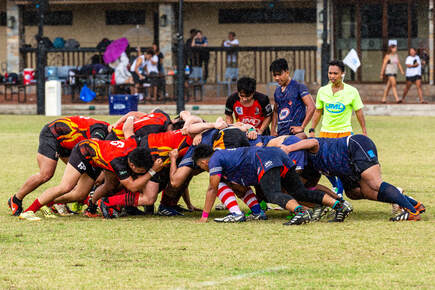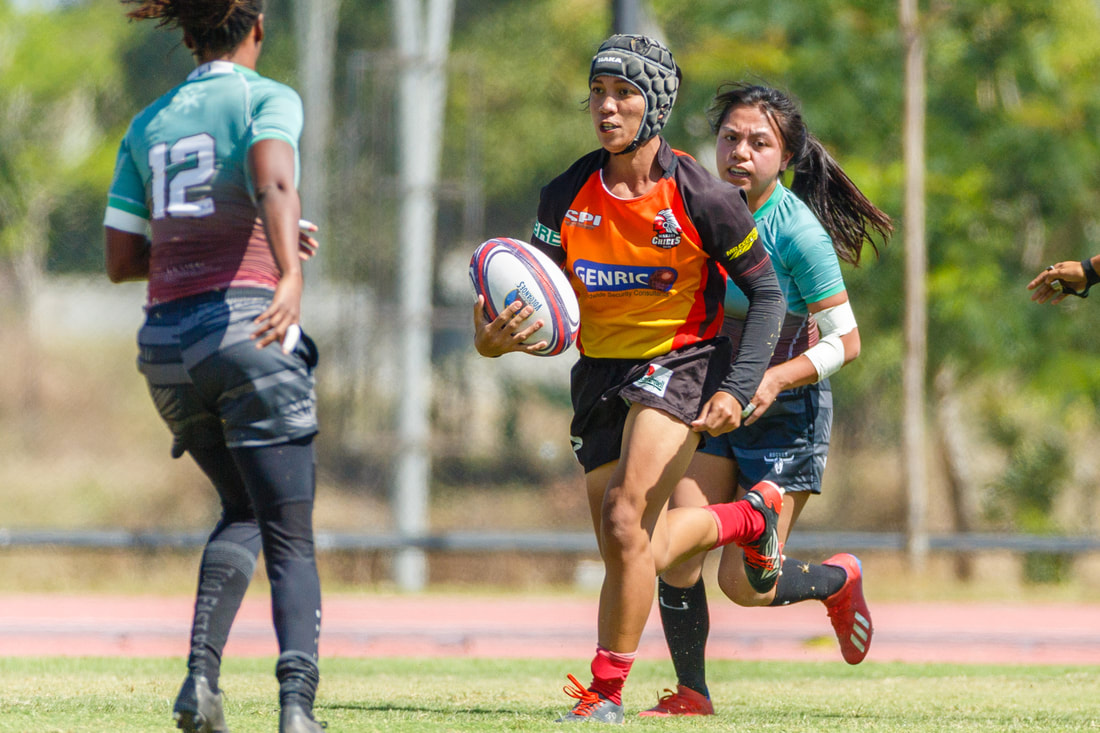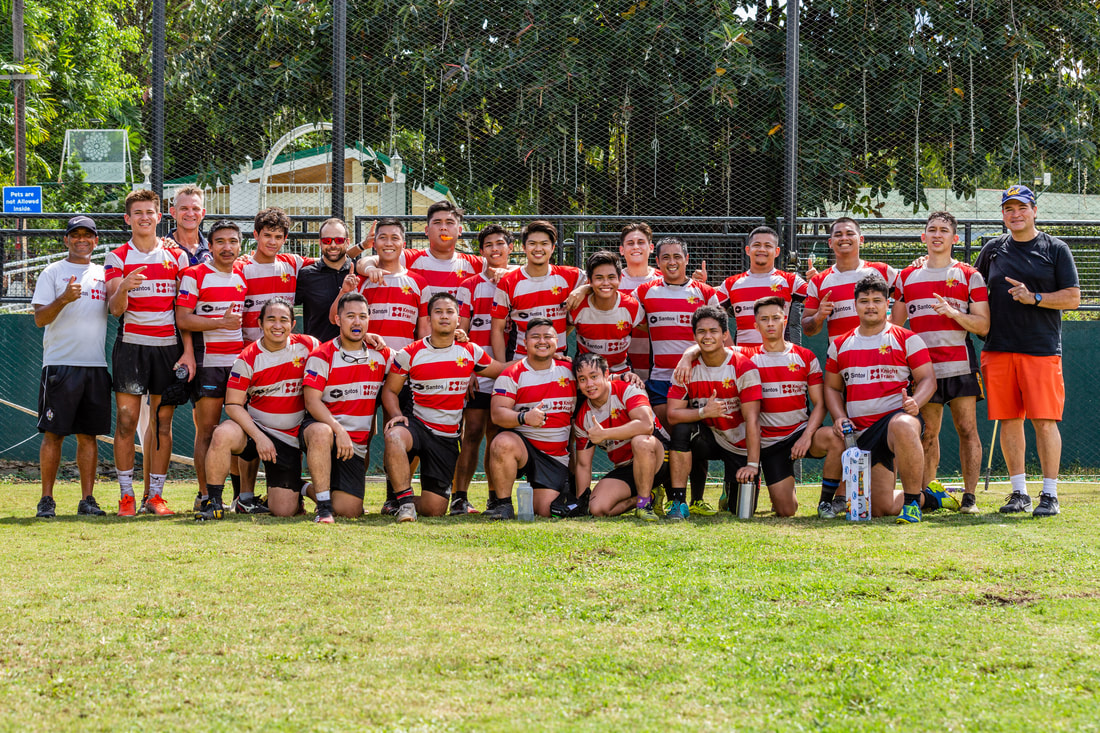'Rugby' - The Sport
|
Rugby Union is a full contact team sport which originated in England in the early 19th century. It is traditionally played with 15 players on each team. There is more than one variant on how to play the game, for example Rugby Sevens, the shorter, faster version of the game was recently re-included into the Olympics.
How do you play? It is played with an oval-shaped ball on a field up to 100 meters (330 ft) long and 70 meters (230 ft) wide with H-shaped goal posts on each goal line. Points can be scored in several ways: a try, scored by grounding the ball in the in-goal area, is worth 5 points and a subsequent conversion kick scores 2 points; a successful penalty kick or a drop goal each score 3 points. |
|
What variants of Rugby Union exist?
Rugby Sevens - played with only 7 players per side. A much faster-paced game compared to 15s with full contact. This is the version that is played at the Olympics. Rugby 15s - traditional style played with 15 players per side for 40 minutes per half, a total of 80 minutes for each full match at the international level. 10s Rugby - played with 10 players per side with full contact Touch Rugby - no contact tackles in this version, light 'touch' contact is made by simply touching the ball carrier with two hands. Kids, Youth and PRFU Rugby 101 sessions typically start with this version for newcomers. Tag/Flag Rugby - participants wear belts with tags/flags. Removal of a tag by the opposing team is considered a "tackle". |
|
History of Rugby
The International Rugby Board (IRB), now known as World Rugby (WR), has been the governing body for rugby union since its formation in 1886. Currently, over 115 national unions are members of the World Rugby. In 1995, the IRB removed restrictions on payments to players, making the game openly professional at the highest level for the first time. According to WR figures, rugby union is played in over 100 countries spanning six continents by men and women of all ages. The premier Rugby competition in the world is the Rugby World Cup which is played every four years. Philippine Rugby are full members of both Asia Rugby and World Rugby, our national programs (men and women) compete each year in the following sanctioned competitions:
All competitions are sanctioned by World Rugby |
Rugby Pitch Field Dimensions
|
What are the Positions in 15s Rugby ?
|
FORWARDS
'Front Row' Prop (1, 3) : The props "prop up" the hooker in the scrum. They form part of the front row of the scrum and push against the oppositions props. The loosehead prop is positioned to the left of the hooker and their head will be on the outside of the scrum when it engages. The tighthead is to the right of the hooker with their head positioned between the hooker and the opposition loosehead. The prop's main role is to provide stability at the scrum and support the hooker in quickly winning the ball. While scrummaging is still seen as their main responsibility, modern props are also expected to contribute in attack and defence. Hooker (2) : The hooker is positioned between the two props in the scrum and generally throws the ball into the lineout. After the scrumhalf has put the ball into the scrum they use their feet to "hook" the ball back and win possession for their team. Hookers can be any shape or size, but generally they have a short back and long arms to aid in binding to props. When the opposition is putting the ball into the scrum the hooker will either attempt to win the ball or try and disrupt the scrum. 'Second Row' Locks (4, 5) : The locks form the second row and push against the front row during the scrum providing much of the power. They are almost always the tallest players on the team and are the primary targets when the ball is thrown in at line-outs.[27] Locks must also have good catching ability. At the lineout the locks are supported by team mates allowing them to compete for the ball, either passing or tapping it to the scrumhalf or setting up a drive. 'Back Row' Flanker (6, 7) : The flanker's role is to tackle the opposition and try to steal the ball. The openside flanker binds to the side of the scrum that covers the greatest area, while the blindside covers the side nearest the side-line. They bind loosely to the side of the scrum, but still play an important role in keeping the props tight by pushing at an angle.[84] They should be the first forward to a breakdown from a scrum or lineout and are expected to link with the backline or secure the ball at the tackle. Number Eight (8) : Number eight is the only position that does not have a specific name in English and is simply referred to as "number eight" or "eighthman". They bind between the locks at the back of the scrum, providing extra weight at the push. Number eights interact with the scrum-half at the back of the scrum to control and provide clean ball for the backs. They can also pick the ball from the back of the scrum and run with it or flick it to the scrum half. At lineouts they can be either another jumper or a lifter. |
BACKS
'Halves' Scrum Half (9) : The scrum-half is the link between the forwards and the backs. They receive the ball from the lineout and remove the ball from the back of the scrum, usually passing it to the fly-half. They also feed the scrum and sometimes have to act as a fourth loose forward. Along with the fly-half they make many of the tactical decisions on the field. During general play the scrum-half is generally the player who receives the ball from the forwards and passes it to the backs. Fly Half (10) : The Fly Half is usually the first to receive the ball from the scrum-half following a breakdown, lineout or scrum and need to be decisive with what actions to take and be effective at communicating with the outside backs. Good fly-halfs are calm, clear thinking and have the vision to direct effective attacking plays. Fly-halfs need good passing and kicking skills. Often the fly-half is the best kicker in the team and needs to be able to execute attacking kicks such as up-and-unders, grubbers and chip kicks as well as being able to kick for territory. Many fly-halfs are also the team's goal kickers 'Centres' Inside Centre (12) and Outside Centre (13) : There are two centres in a game of rugby, inside centre (number 12) and outside centre (number 13). The inside centre usually stands close to the fly half or at first receiver on the other side of the scrum or breakdown. Like the fly half they generally possess a good kicking game and are good at reading the play and directing the attack. The centres main role is to provide space for the men outside them. They need to run good lines, have good passing skills and should be able to offload in a tackle. 'Back Three' Wing (11, 14) : The wings are generally positioned on the outside of the backline with the number 11 on the left and the number 14 on the right. Their primary function is to finish off moves and score tries. Wingers are usually the fastest players in the team and are either elusive runners, or more recently big, strong and able to break tackles. Full Back (15) : Fullbacks normally position themselves several metres behind the back line. They field any opposition kicks and are often the last line of defence should an opponent break through the back line. On attack they can enter the back line, usually near the centres or wings, with the aim of providing an extra person and overlapping the defending players. |













